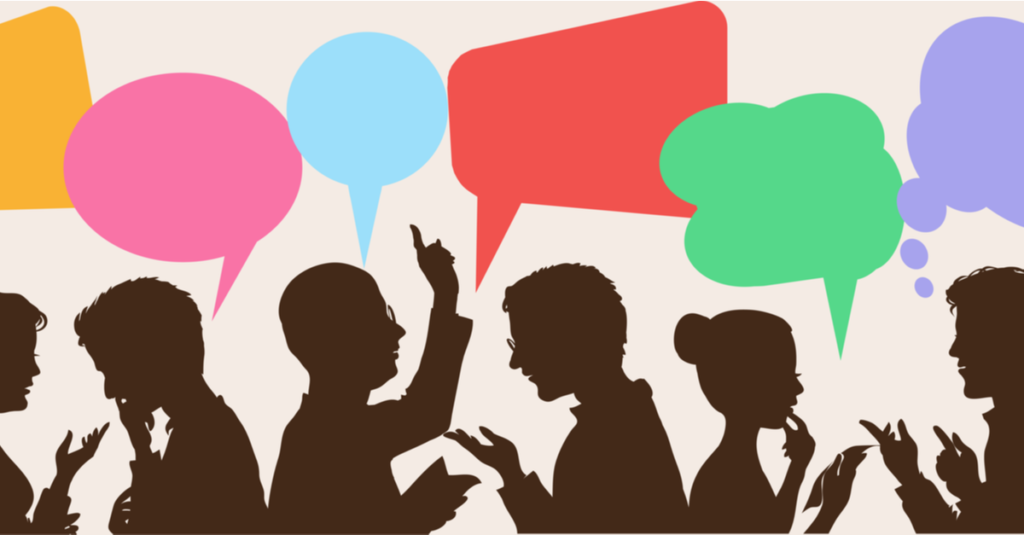How to spot, address, and prevent social threats
Do you ever come out of a conversation with a colleague and think, “What just happened!?” Working with people is tricky. Our words and actions are loaded with meaning. It’s easy to cause offense or make someone feel threatened without meaning to or realizing it. Recognizing and addressing people’s social needs can help you minimize risks and maximize rewards in social situations.

On a scale from one to ten, how confident are you that you don’t make people feel threatened at work? Take a look at the list below and consider whether you’ve done any of these things – or something like it.
Have you ever…
- Not taken time to properly support a team member?
- Assumed someone would do something and shown frustration when they didn’t?
- Compared one person’s performance unfavorably to another’s when giving feedback?
- Made a decision that affects someone and not explained your process or rationale?
- Given feedback during an annual performance review that you didn’t share earlier?
- Lost your temper with a colleague?
- Micromanaged?
Most of us have done one or more of these things at some point in our careers. In fact, some of us do these things all the time. For reasons I’ll explain, this means that most of us have made a colleague feel threatened, and some of us (unintentionally) make our colleagues feel this way a lot of the time.
Why do these actions make folks feel threatened? Because they put people’s social needs at risk. What’s a social need? It’s the universal emotional need people have to connect to others and feel a sense of security and belonging in interpersonal relationships.
Social needs are an essential aspect of being human, and they influence how we think, feel, and act. At work, these needs – and whether or not they’re met – have a profound impact on motivation and performance.
Brain matters
Interestingly, a growing body of brain research indicates that the brain assesses physical and social needs in the same way. The brain constantly assesses physical threats and rewards and sends signals to the body telling it to move away from threat and toward reward. The fight or flight response is an example of how the body reacts when the brain perceives threat.
Likewise, the brain continuously assesses social threats and rewards. When someone says or does something that makes us feel uncertain or excluded in a social interaction, our natural instinct is to protect ourselves; we move away from people and situations that make us feel vulnerable and excluded and seek out people and situations that make us feel secure and included.
At work, when a person’s sense of social security or belonging is threatened, common self-protecting reactions are things like finding ways to avoid working with a certain colleague, saying little or nothing in a one-on-one or group discussion, and yelling at or criticizing the person creating the threat.
When we consider the fact that work is full of social interactions, we can see that the potential for social threats and rewards is high. In order to minimize social threats and maximize social rewards, we need to know exactly what to watch out for.
Five needs to focus on
Through his work with organizations and neuroscientists, neuroleadership expert David Rock identified five social needs that are particularly relevant for leaders. These needs are status, certainty, autonomy, relatedness, and fairness (also known as the SCARF model). When leaders recognize and address these needs, it has a direct and positive effect on people and performance.
Let’s take a closer look at these needs.
Status is how one person feels they compare to another person or group of people.
Certainty is the sense that you know what will happen in the social interaction.
Autonomy is the feeling of being independent and having the right amount of control.
Relatedness means feeling a strong social connection to an individual or group of people.
Fairness is the perception that something is done in a just (or fair) way.
In Managing with the Brain in Mind, Rock writes,
“If you are a leader, every action you take and every decision you make either supports or undermines perceived levels of status, certainty, autonomy, relatedness, and fairness in your enterprise. In fact, this is why leading is so difficult. Your every word and glance is freighted with social meaning. Your sentences and gestures are noticed and interpreted, magnified and combed for meanings you may never have intended.
The SCARF model provides a means of bringing conscious awareness to all these potentially fraught interactions. It helps alert you to people’s core concerns (which they may not even understand themselves) and shows you how to calibrate your words and actions to better effect.” (12)
Making SCARF more concrete
When I first learned about social needs and SCARF threats and rewards, I was excited and intrigued. These concepts felt relevant and important, but they also felt a little abstract. To make these concepts clearer, I thought about successful – and not so successful – interactions I’ve had with colleagues as well as between leaders and teams I’ve supported. I asked myself, “What SCARF threats and rewards existed in these interactions?”
Consider the following story,
Hector and his supervisor, Eleanor, are having their weekly catch-up meeting. Hector updates Eleanor on the status of a project he’s leading. Hector explains that he and his team are in the process of revisiting decisions they made about how to best allocate project resources.
As he’s talking, he notices Eleanor’s facial expression changes from relaxed to tense. Eleanor interrupts Hectors and says, “I’m confused. Why didn’t we talk about how resources would be used before you made final decisions?” Her words are clipped and Hector senses that she’s irritated.
Now it’s Hector’s turn to look confused. He responds, “I didn’t realize you wanted to be involved in that level of detail. I thought you wanted me to keep you up-to-date on the project and make sure you were aware of big challenges and successes.”
Eleanor replies, “I don’t need to be involved in the day-to-day of the project, but I do expect you to talk to me before you finalize big spending decisions. This is something all the other team leads do.”
Hector’s face stiffens and he becomes quiet.
Eleanor senses that Hector is withdrawing from their conversation. This is something he often does when she points out a mistake he’s made. She makes a mental note to address this issue with him soon.
She tries to engage him and says, “In the future, it would be really good if you could run spending decisions by me before you make them final. This way we’ll always be on the same page. For now, let’s focus on how to resolve the spending problems you’re having. How can I help you?”
Hector’s tone is polite, but more formal than before. “Just to clarify, we’re not having spending problems. The reason I’m revisiting my earlier decisions about resource allocation is because we overestimated how much money we needed for consulting support in the planning phase. We now have more money than we thought we would for the implementation phase.”
“That seems like a good problem to have,” says Eleanor.
“It is. It’s actually not a problem at all,” Hectors says. “I wanted to share some ideas for how we can use the extra money, but our check-in is almost over and there are a few other items on our agenda we need to talk about today.”
Eleanor responds, “Why don’t you put some time on my calendar so we can talk about project spending ideas?”
With that, Hector and Eleanor move on to talk about their remaining agenda items. The positive and collaborative tone that existed between them when the meeting started is gone. Hector and Eleanor both leave their meeting feeling deflated.
When we view this interaction through the lens of the SCARF model, we can see that it’s loaded with potential threats. Consider Eleanor’s actions:
- Eleanor never told Hector to consult with her about the budget, but she is frustrated with him when he makes decisions without her. Her failure to set clear expectations potentially undermines Hector’s need for fairness, autonomy, and certainty. The fact that she criticizes him for not meeting her unstated expectations increases the threat to fairness.
- Eleanor also compares Hector unfavorably to his colleagues when she says that all the other team leads discuss resourcing decisions with her before making them final. This comparison potentially undermines Hector’s sense of status.
- She also interrupts Hector before he explains his situation and needs, and she jumps to the conclusion that he is having spending problems and wants her help. Eleanor’s poor listening and inaccurate assessment of his skills and needs potentially threatens Hector’s sense of status as well as his feelings of relatedness towards her.
Given the number of threats that Hector potentially experienced in this conversation, it’s no wonder so little was achieved, and he left feeling demotivated. Understanding the SCARF model could have made Eleanor more aware of the impact she was having on Hector and why he was reacting in the ways he did. It may even have prevented her from making many of the mistakes she did in the conversation.
Last thoughts
As a coach and consultant, I work with a lot of different models and tools for communication and leadership effectiveness. For me, what makes the SCARF model so valuable is that it’s something people can use everyday in any relationship to strengthen interactions and outcomes.
Social needs aren’t an abstract concept – they’re something we live with every day. We all recognize the need to feel connected to and accepted by others. We all know how hurtful it is to be left out, overlooked, pushed aside, and treated unfairly. And we all know how satisfying it is to feel valued by others and certain and in control in our relationships.
We also all have the ability to make small but meaningful choices every day that make our interactions with colleagues stronger and more rewarding. The SCARF model is a great tool to help us be more self-reflective and intentional in these interactions.
Set up a free consultation
Do you need support to strengthen your own or someone else’s performance? Set up a free consultation and let’s discuss what you need and how I can help.
